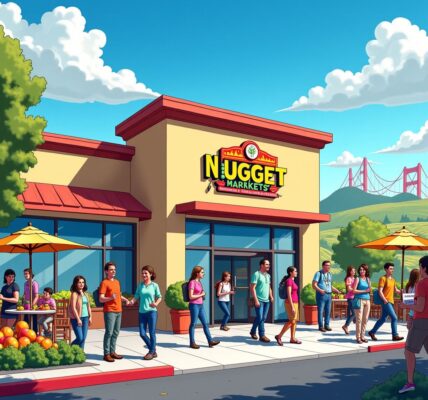As consumers navigate the complex landscape of purchasing decisions, new data from the U.S. Census Bureau illustrates an intriguing combination of caution and resilience. Recent sales figures indicate a 0.1% increase in overall retail sales, yielding a 2.1% year-over-year (YoY) growth. This situation points towards a fundamental willingness among consumers to spend in grocery sectors, with grocery store sales reaching approximately $74.46 billion last month, subtly positioning itself between figures from previous months.
Notably, grocery sales have increased by 1.5% in comparison to the same period last year, reflecting an underlying trend in consumer behavior. Chip West, director of category strategy at RR Donnelley, emphasizes this momentum, highlighting how consumers seem to be responding favorably to easing inflation. He points out that “across grocers, we’re seeing expansion among store brand offerings as consumers increasingly seek out value and great prices.” Retailers who wish to maintain their customer base must consistently provide attractive deals and value propositions.
The chief economist at the National Retail Federation, Jack Kleinhenz, corroborates this perspective by noting that the data reflects the “resiliency of the American consumer.” While the pace of sales growth may have slowed, there are minimal signs of a spending downturn. Kleinhenz suggests that wage growth has outstripped inflation, thereby enhancing consumers’ capacity to spend. This shift in consumer behavior is particularly significant as it translates into increased grocery expenditures despite broader economic concerns.
Moreover, insights from 210 Analytics reinforce the idea that consumers are adjusting their spending habits. With many eating out less frequently, groceries are taking on added importance in household budgets. As noted by Anne-Marie Roerink, a principal at 210 Analytics, retail is often becoming “the ‘plus one’ to the core meal coming from a restaurant,” indicating a shift towards more balanced meal solutions combining both dining out and grocery purchases.
The rising figures do not just stop at grocery purchases. The Circana data shared by 210 Analytics shows that total food and beverage sales experienced a respectable 2.3% increase during the five-week period ending September 1. Excitingly, fresh meat sales reflected healthy growth, with fresh beef rising by 4.3% and fresh chicken by 2.8%. The seasonal peak during harvest months also saw impressive results for produce, notably berries, tomatoes, potatoes, and onions.
In-store bakery sales, despite remaining flat, reflect a steady consumer interest in fresh, quality products. On the other hand, the frozen foods category is experiencing a positive turnaround. This diversity in consumer preferences underscores the need for retailers to adapt their strategies to meet changing needs while capitalizing on current trends toward freshness and value.
While the immediate outlook shows promise, economists warn of potential challenges ahead, particularly concerning the upcoming U.S. presidential election and its implications for the economy. The U.S. Federal Reserve has recently implemented a significant 0.5% interest rate cut aimed at stimulating economic growth. This creates an interesting context for retailers, as consumers may respond positively to improved economic conditions, further influencing grocery spending.
As businesses continue to analyze these patterns, it is evident that the current economic climate, driven by easing inflation and changing consumer behaviors, provides both challenges and opportunities. Retailers should therefore focus on refining their strategies, catering to value-driven consumers, and highlighting store brand offerings to stand out in a competitive landscape.
In conclusion, the grocery sector’s resilience in the face of easing inflation reflects an ongoing adaptation to both macroeconomic changes and shifts in consumer sentiment. As we look to the future, the emphasis on value, quality, and effective retail strategies will likely define the next phase of grocery shopping in America.












